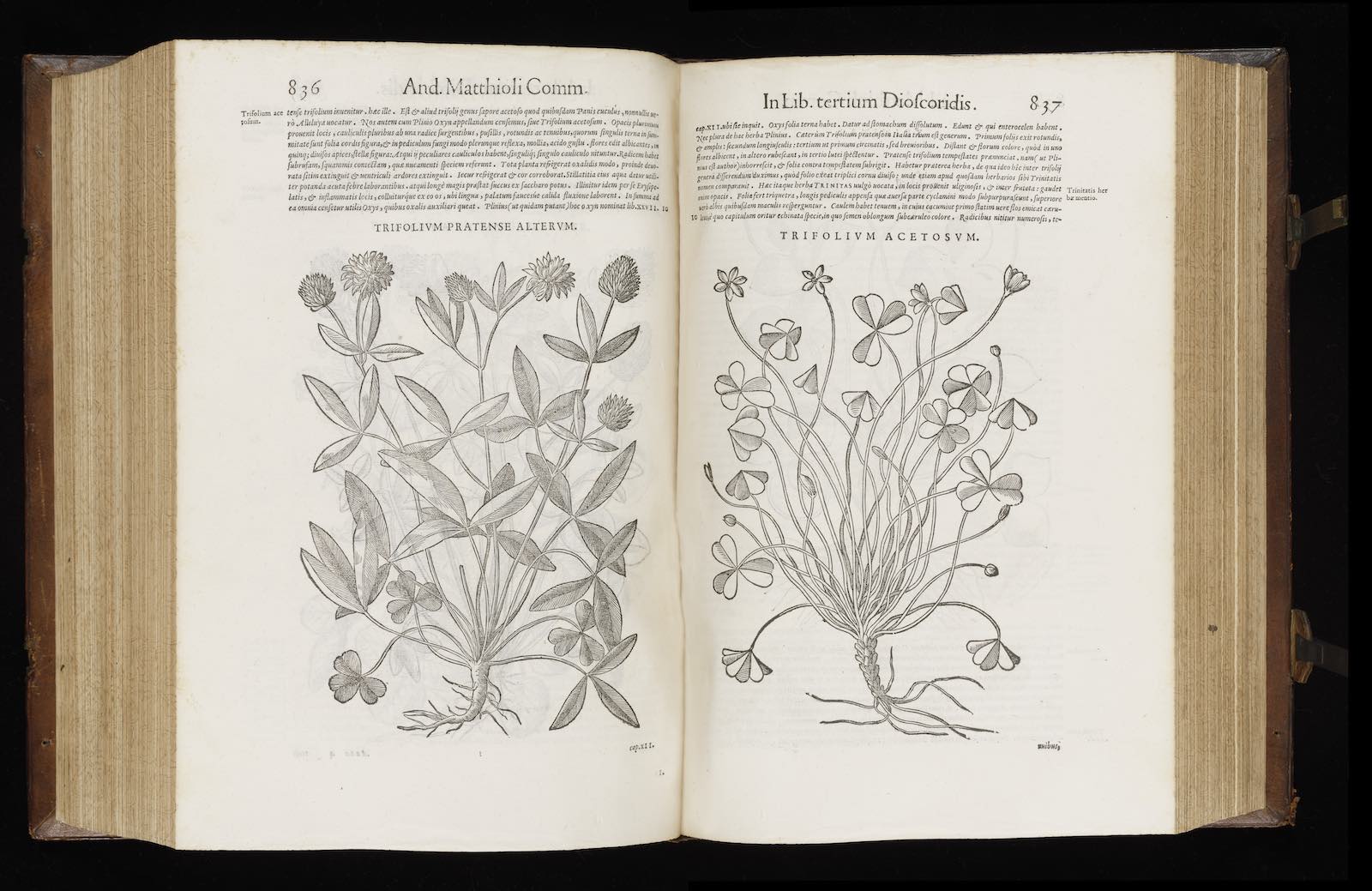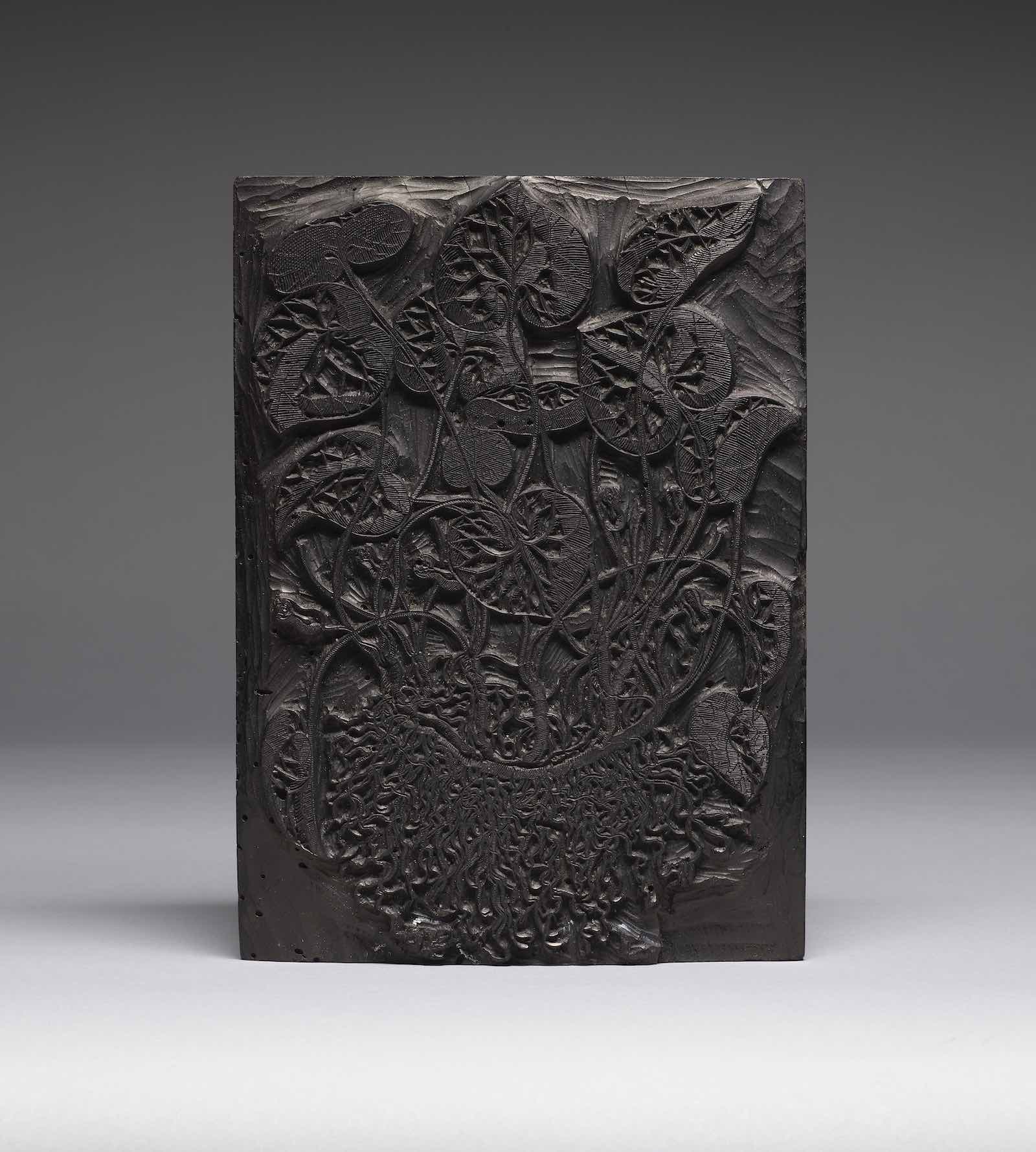Also on display is Commentarii in sex libros Pedacii Dioscoridis Anazarbei de medica materia (Commentary on the six books of Dioscorides’s 'On medical material') by Pietro Andrea Mattioli (1501–1577). Perhaps second only to Dioscorides, Mattioli is one of the most significant figures in early European botany. The 1,012 large format images in this edition mark the high point of botanical woodcut illustration in the 16th century, uniting technical and artistic virtuosity with morphological accuracy.
Printed illustrations were a collaboration between at least two artists: one to draw the image and the other to carve the woodcut or engraving that would make the image reproducible. This edition is accompanied by two original woodblocks made by the illustrator Giorgio Liberale (b. 1527) and the blockcutter Wolfgang Meyerpeck (ca. 1505 – 1578), used in printing the plant images. On view are the Caper spurge (Euphorbia lathyris) woodblock from the Peter Goop Collection and the Morgan’s Hazelwort (Asarum eurpaeum) woodblock.
Colin B. Bailey, Director of the Morgan Library & Museum, said: “Seeds of Knowledge: Early Modern Illustrated Herbals allows us to look closely at preeminent and outstanding examples of these early modern books, as well as providing an opportunity to think about our relationship to the natural world and scientific discovery, at a time when we are increasingly attentive to the challenges of ecological and environmental change.”
The exhibition is curated by John McQuillen, Associate Curator of Printed Books and Bindings at the Morgan Library & Museum in New York.





![Odo of Meung [pseud. Macer Floridus], (eleventh century) De viribus herbarum carmen (Poem on the powers of herbs) Geneva: (Jean Belot?), ca. 1495](/sites/default/files/media-images/2023-10/odo-meung.jpg)













